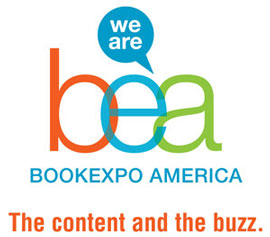
Image via Wikipedia
Such “intrinsic motivation” is something that author Daniel H. Pink discusses in Drive: The Surprising Truth About What Motivates Us. Motivation is the key to learning and to improving skills. Extrinsic motivations, the reward/punishment “carrots” and “sticks” are not only not necessary for something intrinsically rewarding but can actually work against producing the desired outcome and can even cause unethical behavior. Let me use what is happening in education as an example.
The traditional corporate model uses incentives like money, recognition and goals to generate high levels of performance in their workers. In education there are grades and awards and assessment tests. But in the classroom, creative teachers can work around these extrinsic motivators to nurture an intrinsic love of learning. This is the mission of my progressive elementary school, The Little Red School House, which I attended through grade six. I received my first report card in grade seven from a traditional junior high school. I loved getting that report card but my father was unimpressed. My grades were excellent but he was all too aware that I had not been working very hard. I had quickly learned how to “game the system” and “rest on my oars.” According to Pink, one outcome of extrinsic rewards is to create shortcuts. For real mastery of any skill, there are no shortcuts. (Something Geoffrey Canada keeps saying about the Harlem Children’s Zone, but politicians still like to trot it out as an example of educational turn-around, one that should be easy for any school to replicate.)
Another unwanted outcome of extrinsic rewards is a narrowing of focus. No Child Left Behind, which has ushered in the era of high-stakes testing, has transformed education to test preparation. In some states, in the next school year, the stakes will get even higher as 40 percent of a teacher’s evaluation will be based on the performance of his/her students on assessment tests. Yet another unwanted outcome is unethical behavior. Diane Ravitch recently wrote a post about the so-called "miracle schools" in which the test scores were suspect and were eventually proven falsified.
Pink summarizes “The Seven Deadly Flaws” of carrots and sticks that run counter to traditional practices of business and education:
1. They can extinguish intrinsic motivation. [The activity is no longer fun.]
2. They can diminish performance.
3. They can crush creativity
4. They can crowd out good behavior.
5. The can encourage cheating, shortcuts, and unethical behavior.
6. They can become addictive.
7. They can foster short-term thinking.
You have to read the book to understand how scientific and solid his thesis is.
Now let’s think about what extrinsic motivation is doing to teachers, whose livelihoods depend on their students’ performance on a test, an obvious extrinsic motivation. Test prep is driving out all the fun stuff of being a teacher. I recently had a video conference with a group of teachers at a school where I was going to do an author visit (after the tests were over, so as not to be a distraction from the business at hand). Usually I do a presentation where I do all the talking but this time I wanted to engage them in a conversation. So I asked them, “What would it take for you to be the teacher you always dreamed of being?” The response was overwhelming — as if I had turned on a faucet. They felt micro-managed, uncreative, under-valued, undermined, and disrespected. And these were teachers who showed up for an after-school, not-required conference with me. Most of the others left school when the bell rang. And from the point of view of a student, I asked my 13-year-old grandson, Jonny, to think about his teachers. Who clearly enjoyed teaching his class and who did not? He named one teacher, his sixth grade English teacher, who was obviously having fun on the job. How can he tell when a teacher was not having fun? Jonny quickly responded, “I’m not learning very much.”



